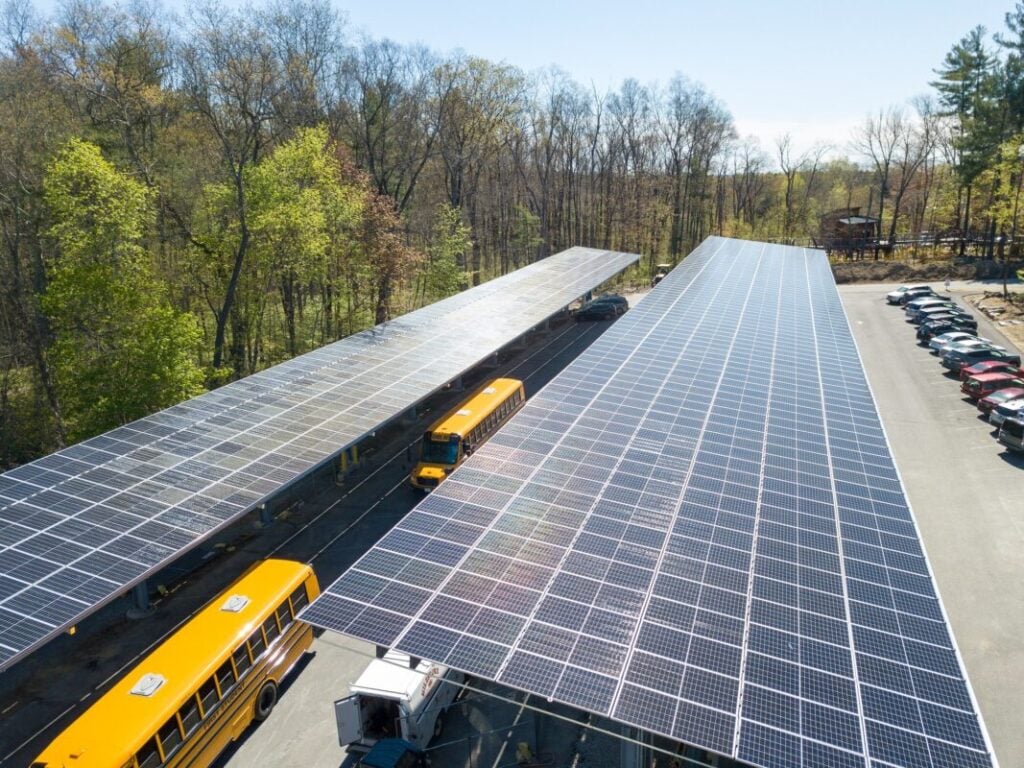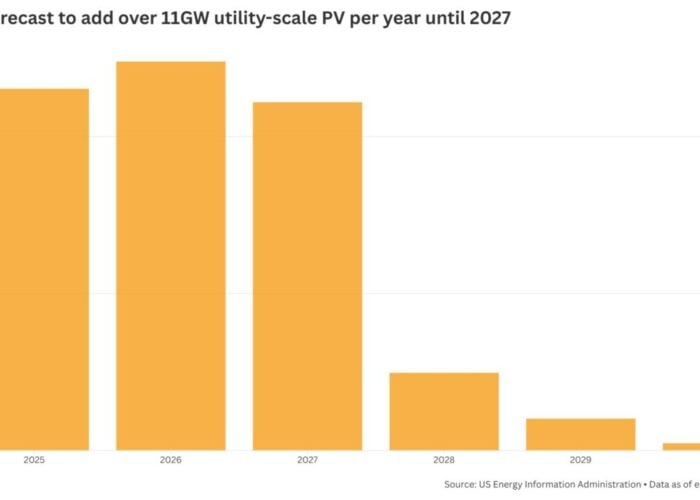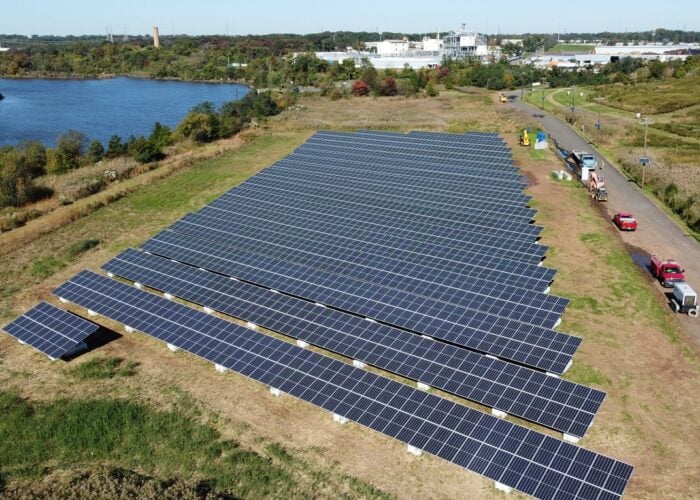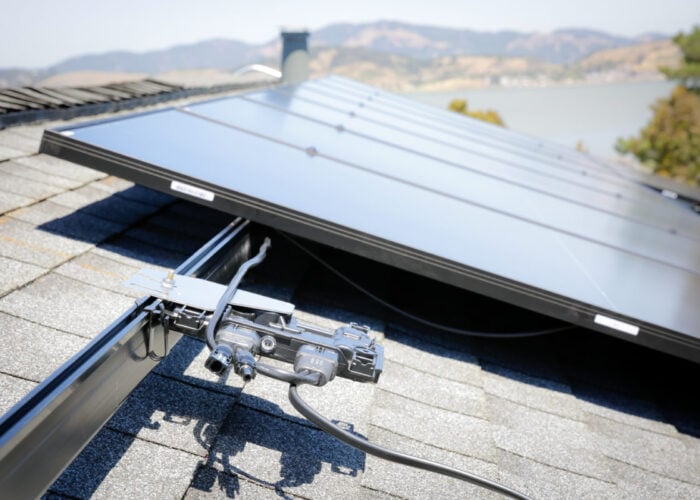
The US added 142,000 jobs to its clean energy sector in 2023, accounting for more than half of all new jobs added to the US energy industry. Solar led the way in this regard, with 18,401 new jobs added to the US electricity generating industry in 2023, a 5.3% year-on-year increase, and more than any other electricity generating technology.
These are the headline takeaways from the ‘U.S. Energy and Employment Report’, published this week by the US Department of Energy (DOE), covering changes in US energy employment figures in 2023. Based on both the strong growth in solar jobs in 2023, and its historically leading position in employment figures, the US solar sector now employs 364,544 people, close to treble the 131,327 people employed in the wind industry, which is the second-largest sector by number of employees.
Unlock unlimited access for 12 whole months of distinctive global analysis
Photovoltaics International is now included.
- Regular insight and analysis of the industry’s biggest developments
- In-depth interviews with the industry’s leading figures
- Unlimited digital access to the PV Tech Power journal catalogue
- Unlimited digital access to the Photovoltaics International journal catalogue
- Access to more than 1,000 technical papers
- Discounts on Solar Media’s portfolio of events, in-person and virtual
Or continue reading this article for free
“Our policies are working. We are now starting to see the job impacts of investments made through the infrastructure and inflation reduction laws—first in construction and as America builds more of these factories, we’ll see hundreds of thousands more,” said secretary of energy Jennifer M. Granholm. “The data clearly show that clean energy means jobs—good jobs, union jobs and jobs retained—in communities across the country as we race to dominate the global clean energy economy.”
Both the solar and wind sectors employ more people than any fossil fuel industry, with the natural gas sector—including both traditional natural gas and what the DOE calls “advanced natural gas”, which includes technologies such as combined cycle plants—employing 132,220 people.
This trend is shown in the graph above, and these technologies are compared to a number of other electricity generation technologies; the hydropower figures both convention hydropower and low-impact hydropower, while the wind figures include both onshore and offshore wind.
Solar and wind also led the way in year-on-year job growth, with a 5.3% growth in the number of solar jobs closely followed by a 4.6% growth in the wind sector. However, solar added far more in terms of sheer number of jobs, with the 18,401 new solar jobs close to quadruple the 5,715 jobs added in the wind sector, suggesting that, at least from an employment perspective, attention is rapidly shifting from the US wind industry to the solar sector.
The energy industry as a whole posted strong growth in number of employees, with the overall year-on-year growth in electric power generation jobs, of 4%, close to double the overall US job growth rate. The energy industry saw a net gain of 35,588 jobs, adding 36,458 and losing just 870, pushing the sector’s total number of jobs over 900,000 in 2023 for the first time.
Construction accounts for half of US solar jobs
The report’s conclusions also reflect growing interest in US solar deployment. Figures published by Ember earlier this year found that solar PV was the world’s fastest-growing source of power generation in 2023, and the DOE’s figures show that, in the US solar industry, the construction sector added 5,318 new jobs, a year-on-year growth of 3%.
This demonstrates that there is significant need for new jobs in the construction and maintenance of new solar projects, and means that, at the end of 2023, construction jobs accounted for half of all jobs in the US solar industry, as shown in the graph below.
This is a higher proportion than any other single technology type, and solar and wind—split by onshore and offshore wind—have a higher proportion of construction jobs than any of the fossil fuel technologies, suggesting that there is significant need for workers to help commission new renewable power projects.
The number of construction jobs also includes those involved in the installation of rooftop solar arrays for the residential and commercial and industrial (C&I) sectors, suggesting that there is a growing need for installation experts across all solar segments.
There has also been rapid growth in jobs in the solar utilities sector. While utilities make up a fraction of the total jobs available in solar—just 4%, equal to the percentage of jobs in utilities in the oil industry—there has been a 51% increase in the number of jobs in the utility industry in solar since 2022.
This trend is even more striking over a longer period of time, with a 316% increase in jobs in the solar utilities sector since 2019, and reflects growing interest in grid and utility management in the US. Earlier this year, the DOE announced US$2.2 billion of new investment into new grid infrastructure in 18 states, amid growing concern that the US’ grids are struggling to meet the sheer volume of solar projects currently under development.
Optimism for future growth
There is also the potential for further job growth in the US solar sector. Regarding historical figures, the DOE notes, in its report, that the figures collected by the US Bureau of Labor Statistics (BLS) could be somewhat unclear, as residential solar installers can be labelled as “electrical contractors”, as opposed to workers in the solar sector specifically, so the number of construction jobs currently present in the solar sector could be even higher.
Looking ahead, the DOE expects jobs in trade to see the largest percentage growth in 2024, expecting the number of jobs to grow by 15% compared to 2023 figures. This is followed by the construction and manufacturing sectors, each forecast to see 11% year-on-year growth, which would result in the construction sector again dominating the distribution of jobs in US solar by the end of 2024.
However, such forecasts can be inaccurate. The DOE notes that, in the previous edition of the report, the department expected the number of utility jobs in the solar sector to increase by just 9%. This is a stark contrast to the actual year-on-year growth seen in 2023 of 51% and reflects the difficulties of accurately forecasting changes in such a fast-moving sector. This discrepancy, along with the other forecast and actual figures for the other job types, is shown in the graph below.
The report also includes responses from 42,000 employers in the energy sector, which were asked about the challenges associated with hiring new staff. Just 11% of companies offering professional and business services in the solar industry said that hiring in solar was “not at all difficult”, the lowest of all employer types, suggesting these companies have the least difficulty hiring new workers.
In the critical construction industry, where half of US solar jobs are concentrated, just 12% of employers said there was no difficulty in hiring new workers, with 55% saying hiring was “somewhat difficult”, and 33% said hiring was “very difficult”. This latter figure is the same for manufacturing companies, where 33% of such companies also said it was “very difficult” to hire new workers, the highest proportion among company types.
This growing concern reflects an increasing awareness of the challenges of hiring new workers in an industry like the solar sector, where new technological and legislative changes take place rapidly. Last year, PV Tech Power’s editorial staff spoke to experts in the American, European and British solar industries to learn about the best hiring and training practices across the sector.







